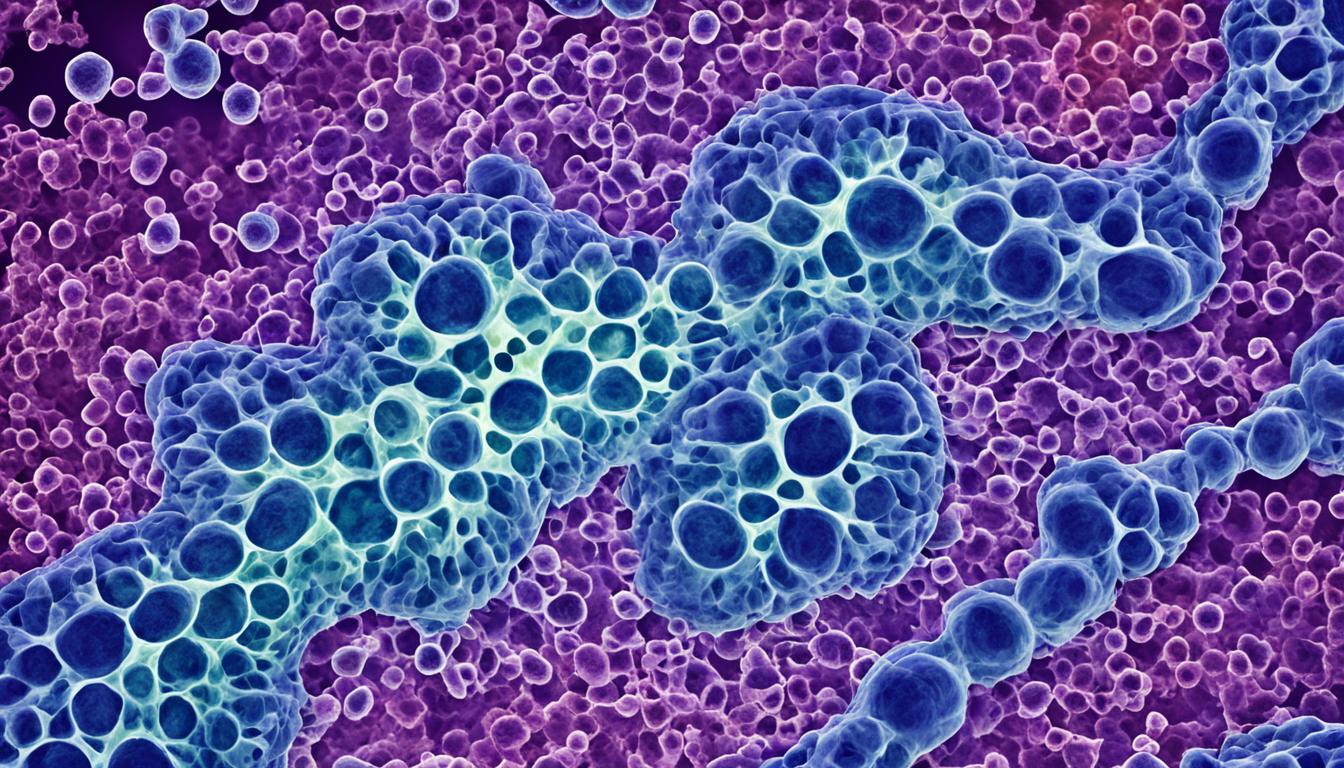Chronic myelogenous leukemia (CML), also known as chronic myeloid leukemia, is a form of cancer. It starts in the bone marrow, affecting the production of white blood cells. Unlike some other types of leukemia, CML tends to be slower in its progress. It often shows up in older adults, but anyone can get it at any age.
CML symptoms can vary but may include bone pain, easy bruising or bleeding, and feeling very tired. People might also lose weight, not want to eat, and sweat a lot when they sleep. Most cases of CML have a genetic change called the Philadelphia chromosome. Factors like being exposed to radiation and getting older can make someone more likely to develop CML.
To find out if someone has CML, doctors do a physical check-up and blood tests. They might also take a small sample of bone marrow for closer examination. Treating CML usually involves targeted drugs, chemotherapy, or even a bone marrow transplant. Thanks to advances in medicine, more people with CML can go into remission. They can then live for many healthy years after being diagnosed.
Key Takeaways:
- CML is a type of cancer that starts in the bone marrow, affecting white blood cells.
- Common symptoms include bone pain, easy bruising, and fatigue.
- Most CML cases have a genetic change known as the Philadelphia chromosome.
- Being exposed to radiation and getting older increases your CML risk.
- Diagnosing CML involves physical checks, blood tests, and bone marrow examination.
- Therapies include targeted drugs, chemo, and bone marrow transplant.
- Recent medical progress has boosted chances of remission and long-term survival for those with CML.
Causes of Chronic Myelogenous Leukemia
Chronic myelogenous leukemia (CML) starts with a genetic mistake. This mistake is known as the Philadelphia chromosome. It happens when parts of chromosomes 9 and 22 switch places. The result is a new, strange chromosome 22.
This new chromosome creates the BCR-ABL gene. This gene makes a protein called tyrosine kinase. Tyrosine kinase spurs on the growth of certain blood cells. Too much growth of these cells can cause CML.
The exact reason this genetic mistake occurs is a mystery. Doctors think it happens after we’re born and not from our parents. It typically occurs randomly. Getting older and being around a lot of radiation can also up the risk of getting CML.
Risk Factors for Chronic Myelogenous Leukemia
| Risk Factors | Description |
|---|---|
| Philadelphia Chromosome | Genetic mutation in chromosomes 9 and 22 |
| Age | Older adults have a higher risk |
| Radiation Exposure | High levels of radiation can increase the risk |
Finding out what causes CML is key to catch it early and treat it well. Testing for the Philadelphia chromosome can find those at risk or with early CML.
Doctors are still learning about this disease. They want to know more about the genetic mistake. This can help them make new treatments that stop or fix the overgrowth of blood cells.
Diagnosis and Treatment of Chronic Myelogenous Leukemia
Diagnosing chronic myelogenous leukemia (CML) is a detailed process. It includes a physical check-up, blood work, and a bone marrow test. These steps help spot the Philadelphia chromosome and check blood cell changes.
The doctor examines the patient, reviews their medical history, and looks for CML signs. This rules out other illnesses and guides further tests.
Blood tests are key for diagnosing CML. They check the levels of various blood cells. CML often shows up with too many white blood cells and some of these cells are not fully developed.
For a clear CML diagnosis, doctors may perform a bone marrow test. A small sample is taken and checked for the Philadelphia chromosome. This helped confirm CML and see how much it’s spread.
After confirming CML, treatment starts based on disease phase and health. In the early phase, drugs called tyrosine kinase inhibitors (TKIs) are often used. They target a protein from the Philadelphia chromosome, slowing cancer growth.
If CML gets worse, chemotherapy might be needed. This uses strong drugs to kill cancer cells.
Sometimes, a bone marrow transplant could be an option for those in serious conditions. It offers a chance to cure CML but is mostly for severe cases.
Managing CML also requires regular check-ups. Doctors monitor the treatment, adjust medication as needed, and ensure the patient’s well-being.
Treatment Approaches for Chronic Myelogenous Leukemia
| Treatment Approach | Description |
|---|---|
| Tyrosine Kinase Inhibitors (TKIs) | Targeted therapy that blocks the activity of the BCR-ABL protein, helping to control the disease. |
| Chemotherapy | Use of powerful drugs to kill cancer cells and slow down disease progression, primarily used in advanced phases of CML. |
| Stem Cell Transplantation | Replacement of the patient’s damaged bone marrow with healthy stem cells from a compatible donor, considered in certain cases. |
Conclusion
Chronic myelogenous leukemia (CML) is a cancer type affecting the bone marrow. It causes too many white blood cells in the blood. This disease can show up in people of any age, but it’s more common in older folks.
The signs of CML include feeling pain in the bones, being tired a lot, losing weight, and getting fevers. A doctor will look for these signs. They’ll do some blood tests and might take a small sample from the bone marrow for further checking.
Thankfully, treatments for CML have gotten much better. There are now drugs that target the specific problems in CML, chemotherapy, and even stem cell transplants. Thanks to these advances, many people with CML live long, healthy lives even after being diagnosed.
But, it’s not just about getting the right treatment once. It’s also about staying on top of the disease. Doctors stress the need for regular check-ups and follow-ups for everyone with CML. By catching any changes early and keeping up with treatment, people have a much better chance of doing well and enjoying life.

